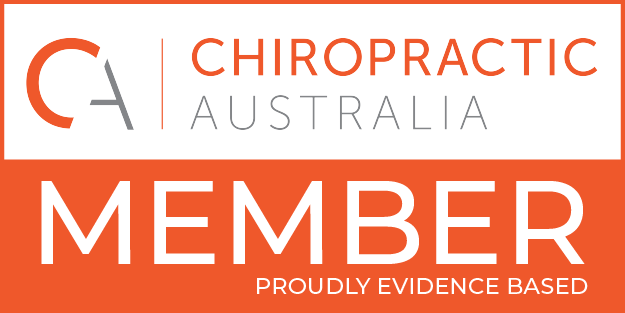Low back pain is a prevalent condition affecting millions worldwide, often prompting individuals to seek relief through medication. Understanding the array of options available and their respective efficacies is crucial for both patients and healthcare providers. Below we will provide three recommendations based on the current evidence. Then we will delve further into the most commonly prescribed and recommended medications for low back pain based on the latest evidence, highlighting how effective they are for treating low back pain and the associated risks and adverse effects of these medications.
Based on the current research you can take away three recommendations regarding drug use in the management of low back pain.
Acute/Sub-Acute (<3 months duration) Low Back Pain Recommendation:
Considering that the majority of patients experiencing acute or subacute low back pain tend to recover spontaneously irrespective of treatment, clinicians and patients are advised to opt for non-pharmacologic treatment options. These may include superficial heat therapy, massage, acupuncture, or spinal manipulation. However, if medication is preferred, clinicians and patients should choose nonsteroidal anti-inflammatory drugs or skeletal muscle relaxants for short-term use.
For more information on what to do when you are experiencing a new episode of back pain, read Jess’s blog – navigating-a-new-episode-of-low-back-pain
Chronic (>3 months duration) Low Back Pain Recommendation
Step 1:
In the case of chronic low back pain, clinicians and patients are advised to first consider nonpharmacologic interventions. This is due to the adverse side effects from most of the medications recommended for chronic low back pain. These nonpharmacologic interventions include exercise, multidisciplinary rehabilitation, acupuncture, mindfulness-based stress reduction, tai chi, yoga, motor control exercise, progressive relaxation, electromyography biofeedback, low-level laser therapy, operant therapy, cognitive behavioural therapy, or spinal manipulation.
For more information on the benefits of maintenance care for low back pain, read Jess’s blog – maintenance-care-for-chronic-low-back-pain
Step 2:
If non-pharmacologic therapy fails to adequately address chronic low back pain, clinicians and patients should contemplate pharmacologic options. Nonsteroidal anti-inflammatory drugs are recommended as the first-line treatment, followed by tramadol or duloxetine as second-line choices. Opioids should be considered only as a last resort for patients who haven’t responded to previous treatments, and only after careful consideration of the risks and benefits, with an open discussion between the GP and patient.
For more information on the different types of medication, see below:
Acetaminophen (AKA paracetamol) e.g. Panadol
Despite its widespread use, recent evidence suggests that paracetamol may not be as effective as once believed for acute low back pain. Studies have shown no significant differences in pain relief between paracetamol and placebo, challenging its efficacy in managing this condition. While acetaminophen carries a lower risk of adverse events compared to NSAIDs, its effectiveness in chronic or radicular low back pain remains uncertain.
Non-steroidal anti-inflammatory drugs (NSAIDs) e.g. Ibuprofen, Naproxen, Advil, Voltaren
NSAIDs are commonly recommended as the first-stop medication for low back pain due to their anti-inflammatory properties. Studies have demonstrated greater mean improvements in pain intensity with NSAIDs compared to placebo for both acute and chronic low back pain. However, NSAIDs are associated with a higher risk of adverse effects, particularly gastrointestinal issues, emphasizing the importance of cautious use.
Opioids e.g. Oxycodone, Morphine, Tramadol and Tapentadol
Opioids are often prescribed for severe or chronic low back pain when other treatments have failed. While some trials suggest short-term relief with opioids, there is low quality and limited evidence to suggest long-term relief from pain. Furthermore, there are concerns regarding their safety and potential for addiction, overdose, or drug abuse, highlighting the need for judicious prescribing and close monitoring. Systematic reviews also found short short-term use of opioids had an increased risk of nausea, dizziness, constipation, vomiting, drowsiness, and dry mouth.
Skeletal muscle relaxants e.g. Methocarbamol, Cyclobenzaprine
Skeletal muscle relaxants are sometimes recommended for short-term relief of acute low back pain, albeit with a caveat of increased risk for adverse effects involving the central nervous system, particularly sedation. Studies have shown superior pain relief with skeletal muscle relaxants compared to placebo in the short term, but evidence for their efficacy in chronic low back pain is lacking.
Benzodiazepines e.g. Valium
Benzodiazepines are occasionally prescribed for low back pain, although evidence supporting their effectiveness is limited, low quality and inconsistent. Research also suggests a greater risk for central nervous system adverse events, including drowsiness, fatigue, and lightheadedness. There are no clinical trials designed to evaluate the risk for addiction, abuse, or overdose, again suggesting against their use and prescription for back pain.
Antidepressants e.g. Endep
Low-dose tricyclic antidepressants, e.g. amitriptyline (Endep), and selective serotonin reuptake inhibitors (Lexapro), have limited evidence to suggest a difference in pain levels in individuals with chronic back pain. However, some studies found that the serotonin-norepinephrine reuptake inhibitor, duloxetine, has shown promise in providing modest relief for chronic low back pain. Recent trials suggest that duloxetine may be more effective than placebo in improving pain and function, albeit with increased risk of adverse events such as nausea and withdrawal symptoms once ceasing the drug’s use. Due to conflicting findings and the associated adverse effects, further research is needed to elucidate the role of antidepressants in managing low back pain and to explore their comparative effectiveness with other medications.
Anti-seizure medications e.g. Pregabalin, Gabapentin
Anti-seizure medications, such as pregabalin and gabapentin, have been evaluated for their efficacy in low back pain, particularly in cases of radiculopathy. However, evidence for their effectiveness remains inconclusive, with some studies reporting inconsistent results and methodological shortcomings. Overall evidence suggests no effect on pain levels and functions for both acute and chronic low back pain. Additional research is warranted to determine the optimal use of antiseizure medications in the management of low back pain.
Systemic corticosteroids e.g. Prednisone
Systemic corticosteroids do not appear to be effective for treating acute non-radicular low back pain or spinal stenosis. There is insufficient evidence to support their use for chronic non-radicular pain. For radicular low back pain which is back pain that refers to one or both legs, several trials consistently found no significant differences in pain relief between systemic corticosteroids and placebo, although one large trial suggested a small improvement in function with corticosteroids at 52 weeks. However, corticosteroid use was associated with an increased risk of adverse events such as insomnia, nervousness, and increased appetite, particularly with oral prednisone. Serious harms were not reported, but some trials had inadequate reporting of adverse effects.
Navigating the myriad of medications for low back pain can be challenging, but understanding the available evidence is essential for informed decision-making. While certain medications, such as NSAIDs and skeletal muscle relaxants, have demonstrated efficacy in providing short-term relief, others, like paracetamol, may offer limited benefits. Furthermore, emerging treatments like duloxetine show promise but require further investigation. Ultimately, a personalised approach considering the patient’s clinical presentation, risk factors, and treatment goals is crucial in selecting the most appropriate pharmacologic intervention for low back pain. For this, it is best to speak to your GP, to discuss what is best for you and your pain.
References
Deyo RA, Mirza SK, Martin BI. Back pain prevalence and visit rates: estimates from U.S. national surveys, 2002. Spine (Phila Pa 1976). 2006;31:2724-7. [PMID: 17077742]
Qaseem, A., Wilt, T., McLean, R., & Forciea, M. (2017). Noninvasive Treatments for Acute, Subacute, and Chronic Low Back Pain: A Clinical Practice Guideline From the American College of Physicians.. Annals of internal medicine, 166 7, 514-530 . https://doi.org/10.7326/M16-2367.
Chou, R., Deyo, R., Friedly, J., Skelly, A., Weimer, M., Fu, R., Dana, T., Kraegel, P., Griffin, J., & Grusing, S. (2017). Systemic Pharmacologic Therapies for Low Back Pain: A Systematic Review for an American College of Physicians Clinical Practice Guideline. Annals of Internal Medicine, 166, 480-492. https://doi.org/10.7326/M16-2458.
Skelly AC, Chou R, Dettori JR, Turner JA, Friedly JL, Rundell SD, Fu R, Brodt ED, Wasson N, Kantner S, Ferguson AJR. Noninvasive Nonpharmacological Treatment for Chronic Pain: A Systematic Review Update. Comparative Effectiveness Review No. 227. (Prepared by the Pacific Northwest Evidence-based Practice Center under Contract No. 290-2015-00009-I.) AHRQ Publication No. 20-EHC009. Rockville, MD: Agency for Healthcare Research and Quality; April 2020. DOI: https://doi.org/10.23970/AHRQEPCCER227.







